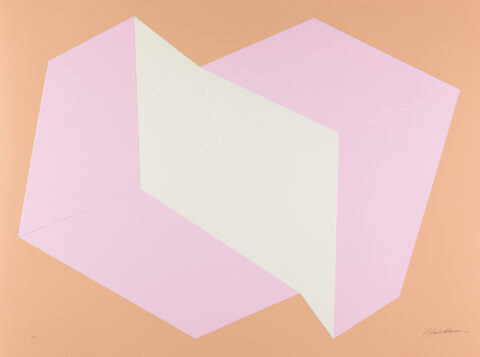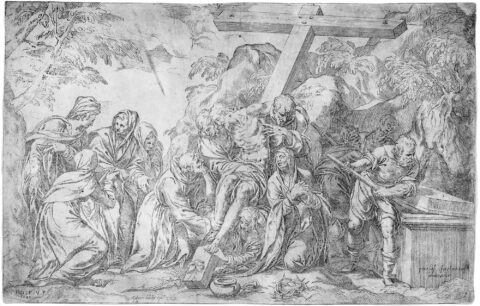
Weir in a forest
Details
Prause 404.
Description
As one of the most versatile polymaths of the 19th century, Carl Gustav Carus was truly multi-talented: he was a doctor, psychologist, art theorist, natural philosopher, researcher, collector and also a painter. Born in Leipzig in 1789, he began studying medicine there in 1806, but also attended the academy where Friedrich August Tischbein and Hans Veit Schnorr von Carolsfeld were teaching at the time. After completing his doctorate and habilitation, he was appointed professor of gynecology in Dresden in 1814, where he met Caspar David Friedrich, with whom he became close friends in 1817. The sombre romantic painter Friedrich initially exerted a great influence on Carus, but almost a hundred years ago Paul Ferdinand Schmitt remarked that “there is probably too much emphasis on the influence that he [Friedrich], the more mature, the professional artist, had on the dilettante doctor. […] Carus is to be respected as a serious student of Klengel in everything that imitates nature and competes far more with Dahl and Öhme than with Friedrich.” The present nature study also confirms this judgment: Carus shows us an excerpt, a kind of romantic fragment, of a pond surrounded by willows. Although not an overtly challenging subject, Carus nevertheless transforms it into a special painting. The picture is divided in half – the upper part showing the bank lined with intertwined willows and shaded meadows, only in the background does the sun break in to reveal a view of the forest and blue sky. The lower half, on the other hand, is taken up by the surface of the water, upon which the pastures and the blue sky are reflected in such a way that more sky blue is visible in the lower part than above. The loose, spontaneous execution emphasizes the immediacy of the impression of nature as a painterly expression of what is seen. Many such studies with nondescript vegetation or landscapes, in which Carus directly records his visual experiences, are dated to around 1835, after he had purchased a country house on the outskirts of Pillnitz in 1832. In 1827, Carus was appointed one of the Royal Physicians of the Saxon King and as a result was often on duty at his summer residence, Pillnitz Castle. The purchase of the country house not only brought him into the immediate vicinity of his employer, but also gave him the opportunity to go on extensive hikes in the surrounding area, during which he found numerous opportunities to acquaint himself with various natural phenomena. In the seclusion of Pillnitz he became increasingly familiar with the practice of oil study in plein air and achieved an astonishing skill in this technique. Among the painters based in Dresden, it was primarily the Norwegian Johan Clausen Dahl and Friedrich Gille who painted studies of nature in oil. While Carus probably did not know the latter, he had maintained a loose friendship with Dahl since 1819, which had come about through Caspar David Friedrich. Although Carus was not entirely uncritical of the Norwegian’s work, he wrote to his friend in Halle, the poet and translator Gottlob Regis, during a visit to his studio in 1820 that Dahl “captured the most diverse landscapes with extraordinary skill and very pure, somewhat bright colours [paint]. I had always admired the exceptional strength and skill in handling the brush, the skill in correctly refracting the colours and the truthfulness of many individual objects, especially the foregrounds, in his pictures.” Our small painting can also be read as an expression of this admiration, but such nature studies had another claim for Carus: as early as 1824, in his letters on landscape painting, he had complained about the neglect of the study of nature in the academies and emphasized the necessity of such studies because the landscape painter thereby became familiar with the internal laws of plants, which underlie their structure. Only knowledge of the internal structure of vegetation would lead him to maintain a reverence for God’s creation. Dr. Peter Prange
* All results incl. buyer’s premium (27%) without VAT. No guarantee, subject to error.
** All post-auction prices excl. buyer's premium and VAT. No guarantee, subject to error.
*** Conditional Sale: The bid was accepted below the limit. Acquisition of the work may still be possible in our post-auction sale.
R = regular taxation
N = differential taxation on works of art which originate from a country outside of the EU
The private or commercial use of images shown on this Website, in particular through duplication or dissemination, is not permitted. All rights reserved.








